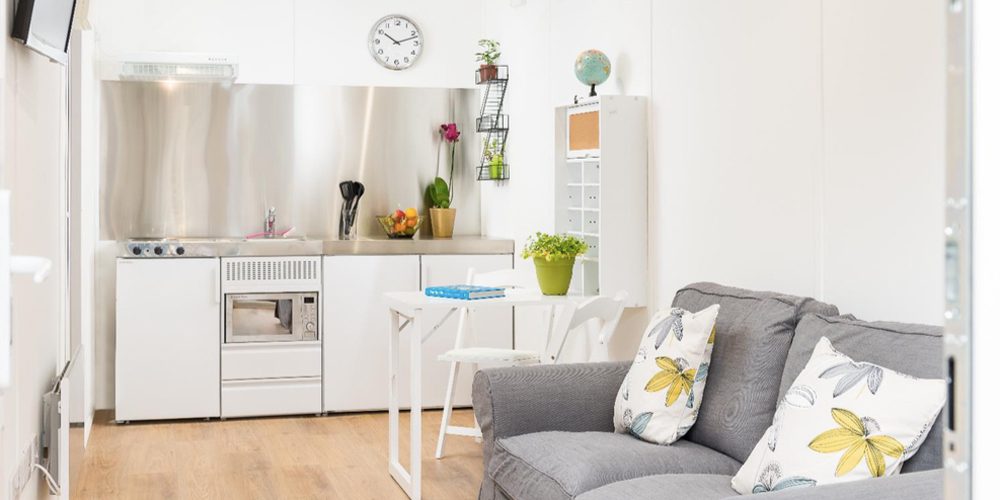To find out more about how alternative housing solutions can help young people with nowhere safe to live, I visited QED Property at the Bordars Walk site, where they are working on a scheme, designed to deliver emergency accommodation for local people who have been, or are about to be made homeless.
QED Property’s ready-made homes are designed and provided by Cargotek, using recommissioned shipping containers. Their project, based in the London Borough of Ealing, will create 10 studios, 16 one-bedroom flats and eight two-bedroom flats for people who would otherwise be homeless. While the scheme is just one of many solutions to the homelessness crisis, here are five reasons why it can help:
They’re quick to install
The containers and the accompanying structures such as stairs can be easily installed by crane, one on top of another, creating a larger residential community. Compared to modular homes, the installation process is relatively simple, requiring one join in the structure, which takes roughly an hour to complete, meaning these essential homes can be created within a timeframe of months, rather than years. Unlike their modular counterparts, due to the nature of their design, they can be easily transported and stored without deteriorating.
They enable people to stay in their local area
Crucially, these homes enable people to stay in the borough, rather than having to be relocated miles away from their support network of family, friends, schools/work places, providing some sense of stability during an extremely stressful time.
They’re cost-effective
Like many London Borough Councils, Ealing’s resources are heavily stretched, so this type of solution is beneficial for all parties. It is a far more appropriate and cost-effective solution than housing vulnerable individuals and families in hostels or emergency bed and breakfasts. The scheme unlocks redundant plots on brownfield sites for interim use, without restricting future regeneration plans.
They’re homely
Whilst their previous industrial incarnation may suggest that they would be bare and uninviting, the reality is they are spacious, light and warm and have a very homely feel. They are inherently versatile and low cost, which is ideal where affordable accommodation is at a premium. Each room is designed with energy efficiency in mind, and is easy to clean and highly durable. Their layout generates a sense of community, whist guaranteeing privacy.
They’re readily available
Another key benefit is availability, with the number of ex-service shipping containers worldwide estimated to be 14 million. If we are to tackle the housing crisis in the short-term, it is important to find quick solutions to boosting the existing housing stock. As Ross Gilbert, Managing Director at QED Property says:
‘We are acutely aware that a radical rethink is required before we make inroads into making our housing stock work for everyone in society. Offsite manufacture build systems have a critical role to play in providing affordable accommodation for all’.
This kind of housing needs to be part of communities that are well connected, with good public transport, schools, GP surgeries and shops. Communities that are viable, inclusive and vibrant to prevent isolation and ghettoization. The potential to apply this model countrywide to reduce pressure where need is greatest, providing better outcomes for young people, is an exciting prospect.

